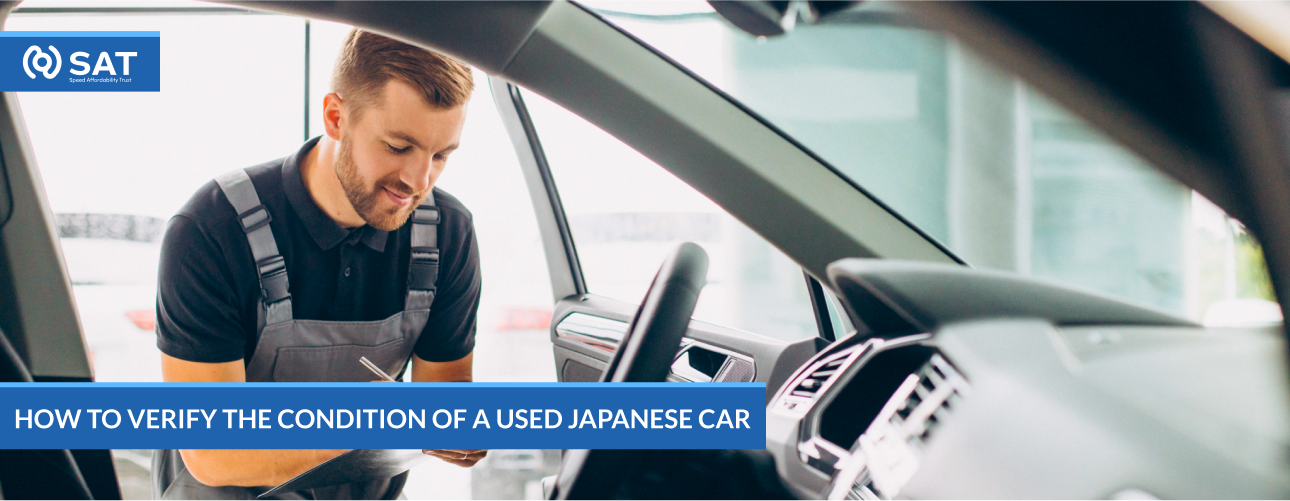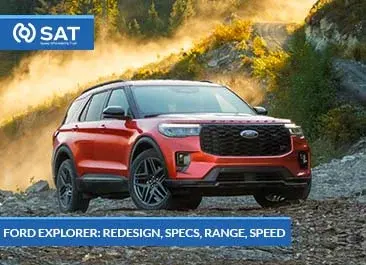Buying Japanese used cars is a process that results in multiple advantages, including affordability, reliability, and a wide variety of Cheap Cars for Sale for you to take your pick from. Your car will be a source of reliability for you, but it is also advised to verify a few details regarding your car first. This is to ensure your peace of mind and to secure your investment when purchasing your ideal vehicle. SAT Japan offers its expertise in providing a few steps of insight for you to follow to be able to get the most out of your car-buying experience.
How Do I Verify a Japanese Car?
It is a good idea for all car buyers to know the details of their used Japanese Brands of Cars before taking them out for a ride. In this case, verifying a Japanese car includes knowing its details. To verify your Japanese used car, one should look for the chassis number on the manufacturer’s build plate. This is typically found on the left or right of the firewall under the bonnet. This number ranges from 12-17 digits and can be referred to as a frame number, as well.
This number acts as a unique identifier to check the following:
- The Vehicle History
- The Past Ownership Records
- Accident Records
- Maintenance Logs
This ensures your vehicle’s legitimacy and the overall condition of your car before buying it.
The Inspection Begins
Let us begin by exploring your car from top to bottom- or, more aptly, from hood to trunk- and ensure its health.
The Exterior
The first step to ensuring the maintenance of your new car starts from the outside. Let us see the necessary measures to ensure your car’s condition.
Bodywork:
Start by examining your car’s body for dents and scratches. Although it is perfectly acceptable for the car to have a few minor scratches, it is a warning sign if there is an indication of a huge amount of rust or major dents and scratches, as this could mean past accidents.
Paint Work:
Make sure the paintwork and finish are consistent throughout the body of your car. Any discrepancies within the paint may suggest possible indications of accidents or damage.
Lights:
Check the lights of your car, such as the headlights, tail lights, brake lights, and indicators. Make sure these are working properly and seamlessly as this could impact your safety.
Windows:
The windows and windscreen need to be fully intact for your further safety. Ensure the glass has no cracks or chips on it, and that the window mirror functions work seamlessly.
The Interior
The next part to inspect in your vehicle is the interior. This is the part where we begin to check the inner usable equipment that will tell us the condition of your car.
The Upholstery:
To really ensure the proper conditions of your car, have a look at the conditions of the upholstery. This indicates the general treatment of the car by the previous owners. Look for tears, stains, and the wear conditions of the dashboard and seats, particularly.
Mirrors:
To maximize your safety, check the conditions of the rear-view mirror and side-view mirrors. Ensure they are properly attached and are crack-free.
Electronics:
Make sure the electronic systems of your car are fully intact, including the radio, infotainment systems, air-conditioning, and navigation.
Controls:
The controls are an essential part of ensuring they are running smoothly enough. Make sure to check the steering wheel, brakes, and speed controls. Check for loose pedals or stiffness that might indicate later issues.
Under The Hood
This is the main unit ensuring your car stays running smoothly. This section contains the heart of your vehicle and is extremely necessary to check.
Engine:
The engine, of course, should be fully well-maintained, with no oil leaks or signs of corrosion. Check for leaks or worn parts on your engine. For a more thorough guide on your engine’s health, check out Guide To Buy Used Cars.
Fluids Levels:
The fluids should be clean and well-maintained. Check the fluids for levels of coolant, brake fluid, transmission fluid, and engine oil.
Breaks and Hoses:
Check for any signs of breaks or wear on these. These should be in maintained condition, without any tears or breaks.
Underneath The Car
This part of your vehicle signifies overall health, with parts that showcase signs of leakage, suspension, etc.
Exhaust:
Check the exhaust system thoroughly, in case of holes or tears and wear. This could lead to costly repairs later.
Suspension:
Check the suspension system and its components thoroughly and ensure there isn’t any sign of wear and tear.
Leaks:
Keep a careful eye out for leaks underneath the car. In case of any puddles or drips, it signifies a risk to the engine or some other critical system’s health.
Performance
It is imperative to note the overall performance of the car. The smoothness of the ride, the engine’s starting speed, and the comfortability of riding in the car. Fortunately, our team of professionals inspects every car thoroughly before and further provides you with pictures to view your car fully, ensuring you stay informed on the latest Trends and Tips for Buyers.
History Verification
It is extremely important to verify the previous conditions of your pre-owned car. For this, we can provide you with detailed reports of the previous history of your car for your perusal. These include:
Service Records:
These are to showcase if the car has been serviced and maintained prior to the buying process. Regular brake check-ins and oil inspections, etc, are good signs.
Ownership History:
This is to view the number of owners and reasons for why the car has been sold. A safer bet is a car with fewer owners and a clean history.
Accident History:
A car that has not been in an accident is a much more preferable option. However, make sure of proper repairs in case of an accident.
Caring For Your Car’s Health
Now that we have reviewed the most important steps to ensure your old Japanese Used Cars for Sale run smoothly enough, and are in good condition, you are fully equipped to go ahead and make your purchase. At SAT Japan, however, you do not have to worry at all, as all our cars are inspected thoroughly by our team. Furthermore, our team provides you with additional pictures of every part of your vehicle for your peace of mind, and to ensure you have no issues with anything later. Our process remains completely transparent. So now you know exactly what to look for to make sure your car is flawless. So, don’t wait any longer, and explore our Japanese used cars collection!
FAQs
Why should I verify the condition of a used Japanese car?
Verifying the condition makes sure that the car is in good working order, has not been in major accidents, and will be reliable and safe to drive.
How does SAT Japan ensure vehicle quality?
SAT Japan conducts thorough inspections and provides detailed reports on each vehicle, ensuring transparency and quality for buyers. Visit our website for more details.
Where can I find the chassis number on a Japanese car?
The chassis number is located on the manufacturer’s build plate and is usually found on the left or right side of the firewall under the bonnet, used for identification.




